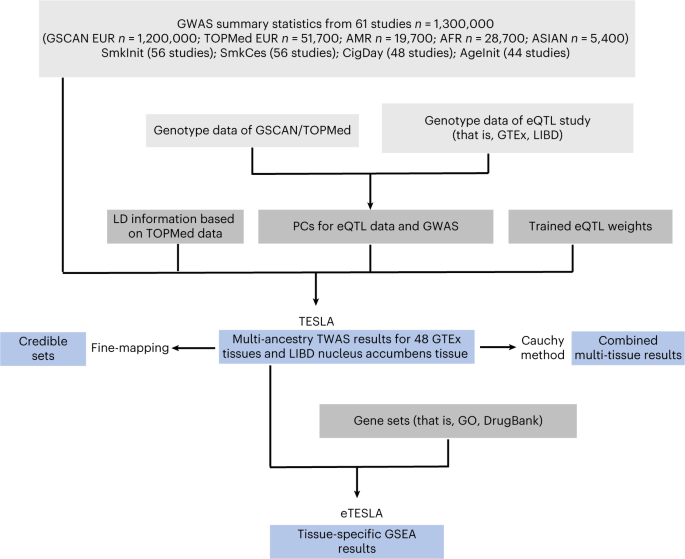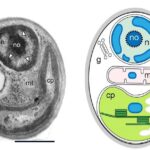細胞が複製時にゲノムを保護する未知の方法を発見 Researchers discover previously unknown way cells protect their genomes during replication
2023-01-24 ワシントン大学セントルイス校
◆ワシントン大学医学部(セントルイス)の研究者らは、細胞がDNAをコピーする際に使用する、これまで知られていなかったシグナル伝達経路を特定した。この研究結果は、1月24日付のMolecular Cell誌に掲載され、この経路を標的とすることにより、癌治療薬の効力が高まる可能性があることが示唆されました。
◆複製ストレスは、細胞のDNA複製機構がゲノムをコピーする際に問題にぶつかった時に起こります。DNAのある部分は、繰り返し配列が多く含まれているため、本質的に複製が困難である。放射線や毒性分子などDNAを損傷する因子も複製ストレスの原因となり、癌を引き起こす遺伝子の活性化も同様である。シスプラチンやドキソルビシンなど広く使われている薬剤を含む数十種類の抗がん剤は、DNAを傷つけ、複製ストレスを増大させることで効果を発揮します。
◆研究チームが発見したプロセスは次のようなものである。DNA複製機構が停止すると、通常は複製機構の背後に控えているExo1と呼ばれるタンパク質が、少しばかり手を焼くようになる。Exo1の仕事は、間違ってコピーされたDNA断片を切り取って品質管理をすることです。しかし、複製装置が停止すると、Exo1は無秩序に切り刻み始め、DNAの断片を切り取って核から細胞の主要部分へと移動させるのです。DNAは通常、核の外には存在しないため、細胞の主要部分に存在するとアラームが鳴る。DNA断片に遭遇すると、センサー分子が一連の分子事象を引き起こし、小胞体と呼ばれる細胞内小器官からカルシウムイオンが放出され、それがExo1をシャットダウンさせる。
◆この最新の研究では、ゲノム保護反応を引き起こす警告信号として、DNA断片が発見されたことが説明されている。この研究は、筆頭著者のシャン・リー博士が、博士研究員として、その後ユーの研究室のスタッフ科学者として率いたものである。Liは現在、中国浙江大学医学部(杭州市)の助教授を務めている。また、共著者の孔玲珍(大学院生)もこの研究に重要な貢献をしている。
<関連情報>
- https://source.wustl.edu/2023/01/power-of-cancer-drugs-may-see-boost-by-targeting-newly-idd-pathway/
- https://medicine.wustl.edu/news/power-of-cancer-drugs-may-see-boost-by-targeting-newly-idd-pathway/
- https://www.cell.com/molecular-cell/pdf/S1097-2765(22)01217-5.pdf
cGAS/STINGによる細胞質DNAセンシングはTRPV2を介したCa2+放出を促進し、ストレス下の複製分枝を保護する Cytosolic DNA sensing by cGAS/STING promotes TRPV2-mediated Ca2+ release to protect stressed replication forks
han Li,Lingzhen Kong,Ying Meng,Chen Cheng,Delphine Sangotokun Lemacon,Zheng Yang,Ke Tan,Abigael Cheruiyot,Zhimin Lu,Zhongsheng You
Molecular Cell Published:January 24, 2023
DOI:https://doi.org/10.1016/j.molcel.2022.12.034

Highlights
•Replication stress induces TRPV2-mediated Ca2+ release from the ER
•STING binds to and represses TRPV2 on the ER in the absence of replication stress
•Cytosolic self-DNA-induced cGAMP promotes STING dissociation from TRPV2 and Ca2+ efflux
•Oncogene-induced replication stress also activates the Ca2+-dependent fork protection
Summary
The protection of DNA replication forks under stress is essential for genome maintenance and cancer suppression. One mechanism of fork protection involves an elevation in intracellular Ca2+ ([Ca2+]i), which in turn activates CaMKK2 and AMPK to prevent uncontrolled fork processing by Exo1. How replication stress triggers [Ca2+]i elevation is unclear. Here, we report a role of cytosolic self-DNA (cytosDNA) and the ion channel TRPV2 in [Ca2+]i induction and fork protection. Replication stress leads to the generation of ssDNA and dsDNA species that, upon translocation into cytoplasm, trigger the activation of the sensor protein cGAS and the production of cGAMP. The subsequent binding of cGAMP to STING causes its dissociation from TRPV2, leading to TRPV2 derepression and Ca2+ release from the ER, which in turn activates the downstream signaling cascade to prevent fork degradation. This Ca2+-dependent genome protection pathway is also activated in response to replication stress caused by oncogene activation.


